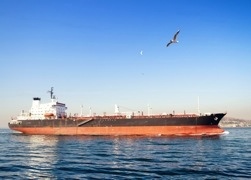
Seafarers face increasing violence as they transit the Gulf of Aden, the Arabian Sea, and the Indian Ocean, but they have limited legal protection or recourse from the crimes committed against them at sea. Since the resurgence of maritime piracy off the Horn of Africa in 2007, hundreds of vessels have been hijacked and thousands of seafarers taken hostage by Somalis seeking to secure lucrative ransom payments. In our analysis of the human cost of Somali piracy, we found that violence against seafarers by Somali pirates is escalating, but little is being done to openly measure and document these crimes.
Oceans are used by multiple stakeholders with divergent and sometimes conflicting interests. Crimes committed aboard or against vessels are subject to the laws of the flag state, however some flag states may not have the capacity or the political will to fully protect seafarers through prosecution and law enforcement. Furthermore, activities occurring on the high seas fall outside the jurisdiction of any single nation; legal protection for the oceans and those who work on them therefore require a legitimate international legal framework accompanied by domestic implementation of international obligations.
International maritime law exists under the United Nations Convention on the Law of the Sea (UNCLOS) and the Convention for the Suppression of Unlawful Acts against the Safety of Maritime Navigation (SUA), both of which are broadly ratified. Under UNCLOS, states have a duty to cooperate through active measures against piracy, and SUA requires parties to extradite or submit offenders to their competent authorities for prosecution. In combination, these conventions appear to require states to prosecute pirates. Despite this ostensibly robust legal regime for prosecuting pirates, few nations have actually done so. As a result, there is no effective legal deterrence to piracy, leaving pirates free to commit crimes at sea with little to no risk of detention.
In order to understand the full extent of the crimes committed by Somali pirates and the cost of those actions to seafarers, we quantified the total number of seafarers attacked or taken hostage. Our study’s findings indicate that during the course of 2010:
- 4,185 seafarers were attacked with firearms and rocket propelled grenades
- 342 seafarers took refuge in a reinforced security room (“citadel”) when pirates boarded, from which they were rescued by naval forces
- 1,090 seafarers were taken hostage and held captive for an average of five months
- 516 seafarers were used as human shields
- As many as 488 seafarers were subjected to abuse or torture
The cost of piracy is high for seafarers. Even in the case of an “unsuccessful” attack where pirates are not able to hijack the vessel, seafarers are still exposed to weapon fire and explosives aimed directly at their place of work. If pirates board a vessel, the crew may be able to take shelter in a citadel; however, this, too, is a dangerous and traumatic experience in which the crew awaits rescue for anywhere from hours to days while pirates try to violently force their way inside. If pirates successfully capture a ship, seafarers are held against their will for months on end during which time they face physical and psychological violence from the pirates, limited access to food and water, uncertainty about their fate, and risk of death.
As Andrew Shapiro, US Assistant Secretary of State, made clear in a speech in March of 2011, “the attacks are more ruthless, more violent, and wider ranging. Hostages have been tortured and used as human shields.” However, official data is only available on the initial incident, whether it is an attack, boarding, or hijacking. This limited categorization of pirate activities undervalues the dangers and trauma faced by seafarers by limiting the description of their ordeal to “hijacking.”
One obstacle that restricts the protection of seafarers is the lack of a single, reliable source to inform seafarers and others of how seafarers are treated during captivity, and how widespread abusive tactics are amongst the various pirate gangs. Seafarers deserve to know the full extent of the risks they face when transiting pirated waters. In the words of a seafarer from the MV UBT Ocean, which was held by pirates for more than four months, during which time crewmembers were reportedly tortured and abused, “all the seafarers must be fully aware of this danger and risk in crossing the Indian Ocean.” While open source news stories and interviews provided enough information to determine the approximate number of seafarers abused or used as human shields, there is no way to independently verify if these figures represent the true extent of the abuse. Our study makes clear that the abuse is alarmingly common, but the lack of more comprehensive reporting prevents the true cost from being understood.
Developing reliable compliance with international agreements and increased protection for the victims of piracy is especially difficult because the maritime industry is fragmented by nationality at every level. Ship owner, ship manager, flag state, cargo owner, and crewmembers may all come from different countries. For example, seafarers taken hostage in 2010 came from at least 30 different countries, the majority of which were developing nations. As a result of this great diversity wherein many different actors and stakeholders bear responsibility for monitoring and protecting seafarers, no single country or group is held accountable. The end result is that seafarers as a whole do not have a central, reliable organization to turn to for legal protection.


